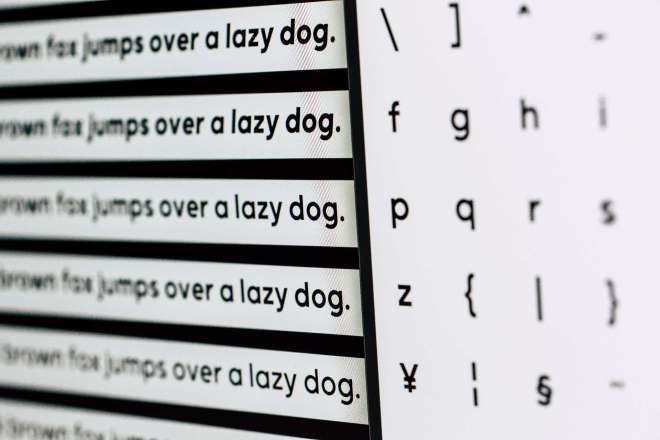There is an estimated 71,060 jobs lost every year in the United States because of online piracy. While that number includes everything from music, to movies, to designs, the amount of monetary loss is staggering. Protecting design work, and personal assets in general, is not as easy as locking it in a safe.
Pirates can steal your design with a few clicks of a mouse and sell it as their own. And, since these pirates are often located in countries with few laws to protect the designer, there may be little recourse for you to get your design removed from their websites or collect damages.
Fortunately, there are a number of tools you can use to protect your work, as well as a bit of common sense.
1. Don’t Post Work Until Complete
Designs are protected similarly to the way that other creative works of art are protected, in that as soon as you create, it is copyrighted to you. However, hackers can take over your work and refuse to cease and desist.
If they are located overseas, it might be almost impossible to get them to hand your work back. One thing you can do to protect yourself is to not post your work until you’ve completed a design for a client.
You can easily share designs via wireframing and protected directories. Make sure that only you and the client have access to it. In the United States, you can register photos, writing and designs with the United States Library of Congress or Patent and Trademark office (depending upon what you are registering). This will give you the ability to retrieve monetary damages from someone who steals your work, assuming they are also located in the United States.
2. Contact the Site Owner
Although it might sound too simple, the first thing you should do is to contact the site owner. Send them a cease and desist letter requesting that your intellectual property be removed immediately. The owner may not be aware that your work can’t just be copied.
Perhaps it is a pirate stealing your work and they don’t respond or respond negatively. Take your case to the site’s hosting company. You can usually find this information by doing a basic WhoIs search.
3. Disable Right Clicking
You can disable right clicking/photo copying on your site. While pirates cans still take a screenshot of the photo or drawing, this will at least slow them down. Some tools you can use for this include WordPress plugins, No Right Click and WP-CopyProtect.
There are others out there as well. But those are two you can start with to get an overall idea of the capabilities and limitations of this type of software.
4. Protect Yourself from Hackers
Hacking attempts could impact your digital work in a number of ways. Hackers can take over your website. This will essentially shut down an online storefront where you sell your designs. There are also ransomware attacks where the hacker takes over your computer. You won’t be able to access any of your files or designs. Protecting yourself from hackers is an important step in protecting your design work so that it is readily available to new clients.
5. Add a Watermark
Adding a digital watermark to design thumbnails and images within a design can prevent piracy as well. You can use a tool such as Visual Watermark to easily add watermarks to all of your images. In order to gain an image with the watermark removed, the person has to actually purchase your design package. You can make it clear in the licensing that redistribution is prohibited.
6. Use Lower Resolution Images
Only offer your higher resolution images to actual customers. When posting samples, make sure the images are lower quality. While thieves can still take your images or copy your design, they won’t have quite as easy of a time of it. They may even move on to an easier victim. This is just another step in your overall arsenal that will help you fight design pirates.
7. Add a Copyright Notice
Add a copyright notice in the footer of your site. Indicate to site visitors that you own the intellectual rights to the work on the site. As mentioned before, when you create intellectual art, you don’t need a copyright notice for that work to belong to you (be copyrighted). The copyright notice serves more as a reminder to others that you are aware you own the copyright. Therefore, you won’t tolerate it being copied without your permission.
8. Timestamp Your Designs
If you ever do have to go to court over a company stealing your designs, you will want to have proof to back up your claims. There are a couple of ways you can accomplish this. You can upload your work to a platform such as Drawy. It will allow you to upload and manage your work as well as give it a digital timestamp. Alternately, you can take a screenshot when you upload the work. Each image will have its own metadata with a clear date the image was taken.
9. File DMCA Notices
The Digital Millennium Copyright Act (DMCA) is one way that you can protect your work from pirates. Google allows you to notify them directly of piracy of your intellectual property by filing a DMCA notice through the Google Webmaster Tools dashboard. Google will research the issue and may cut off traffic to the offending site. While your content will still be there, less people will find it when doing an Internet search.
Protecting your design work can be a real battle in this digital global age. Not everyone has the scruples they should when it comes to other people’s work. However, implementing these techniques will help protect you as much as possible. When all else fails, filing notices, contacting hosting companies, and even taking legal action may allow you to remove offending material.
About The Author
Eleanor Hecks is the Editor-in-Chief of Designerly Magazine, an online publication dedicated to providing in-depth content from the design and marketing industries. When she's not designing or writing code, you can find her re-reading the Harry Potter series, burning calories at a local Zumba class, or hanging out with her dogs, Bear and Lucy.


